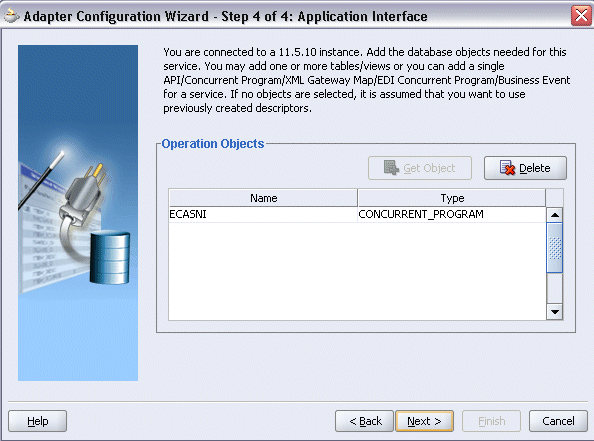The insights and smart outcomes from Oracle AI Apps for ERP Supplier Categorization provide smart input to the discount negotiation process. Oracle AI Apps for ERP Intelligent Payment Discounts uses this input to automatically and intelligently generate vendor-specific discount offers in exchange for early payment of outstanding payables based on in-the-moment supplier profile and risk data. The outcome of each offer (accepted or rejected) is then used by machine learning algorithms to optimize the discounting program for a company's unique supplier portfolio and procurement practices. Traditional discounting approaches lack the flexibility to constantly adjust and optimize recommended discount offers. The AI and data-driven discounts created by Oracle AI Apps for ERP Intelligent Payment Discounts use the enhanced vendor information from Oracle AI Apps for ERP Supplier Categorization to capture savings missed by rigid, prenegotiated contract terms and generate investment returns on free cash.
Query to list concurrent program details with its parameter, values set and default value/type AND Attached Responsibilities 1. Query to list all the responsibilities attached to a user select fu.username, fr.responsibilityname, furg.startdate, furg.enddate. The reason is obvious. The wrapper hijacks most of the application’s calls, and it is the wrapper that communicates with the operating system. The downside of app wrapping. As for security, app wrapping is not an option. Security is not about relying on the security of the wrapper and letting the wrapper hijack the app’s system calls.
A wrapper function is a subroutine in a software library or a computer program whose main purpose is to call a second subroutine[1] or a system call with little or no additional computation. Wrapper functions are used to make writing computer programs easier by abstracting away the details of a subroutine's underlying implementation.
Purpose[edit]
The masque of slaanesh datasheet. Wrapper functions are a means of delegation and can be used for a number of purposes.
Programming convenience[edit]
Wrapper functions can be used to make writing computer programs easier. An example of this is the MouseAdapter and similar classes in the Java AWT library.[2]Wrapper functions are useful in the development of applications that use third-party library functions. A wrapper can be written for each of the third party functions and used in the native application. In case the third party functions change or are updated, only the wrappers in the native application need to be modified as opposed to changing all instances of third party functions in the native application.
Adapting class/object interfaces[edit]
Wrapper functions can be used to adapt an existing class or object to have a different interface. This is especially useful when using existing library code.
Code testing[edit]
Wrapper functions can be used to write error checking routines for pre-existing system functions without increasing the length of a code by a large amount by repeating the same error check for each call to the function.[3] All calls to the original function can be replaced with calls to the wrapper, allowing the programmer to forget about error checking once the wrapper is written.A test driver is a kind of wrapper function that exercises a code module, typically calling it repeatedly, with different settings or parameters, in order to rigorously pursue each possible path. It is not deliverable code, but is not throwaway code either, being typically retained for use in regression testing.An interface adaptor is a kind of wrapper function that simplifies, tailors, or amplifies the interface to a code module, with the intent of making it more intelligible or relevant to the user. It may rename parameters, combine parameters, set defaults for parameters, and the like.
Multiple inheritance[edit]
In a programming language that does not support multiple inheritance of base classes, wrapper functions can be used to simulate it. Below is an example of part of a Java class that 'inherits' from LinkedList and HashSet. See Method for further implementation details.
Library functions and system calls[edit]


Many library functions, such as those in the C Standard Library, act as interfaces for abstraction of system calls. The fork and execve functions in glibc are examples of this. They call the lower-levelfork and execve system calls, respectively.
This may lead to incorrectly using the terms 'system call' and 'syscall' to refer to higher-level library calls rather than the similarly named system calls, which they wrap[4].[5]
See also[edit]
- Language binding wrapper to another language
- SWIG automatic wrapper generator
References[edit]
- ^Reselman, Bob; Peasley, Richard; Pruchniak, Wayne (1998). Using Visual Basic 6. Que. p. 446. ISBN9780789716330.
- ^The Java Tutorials
- ^Stevens, Richard; Fenner, Bill; Rudoff; Andrew M. (2003). UNIX Network Programming. Addison-Wesley. pp. 5–6, 29. ISBN9780131411555.
- ^'syscalls(2) - Linux manual page'. man7.org. Retrieved 2020-04-25.
- ^'System Calls (The GNU C Library)'. www.gnu.org. Retrieved 2020-04-25.
Top News
- Full Metal Alchemist The Movie Torrent
- Billiards For Mac
- Skype Emoticon Icon
- Toshiba Satellite A100 Psaa8c Drivers For Mac
- Download New Blue Lake At Night Wallpaper For Mac
- Outlook Para El Tiempo De Inactividad De Mac
- Download Assassins Creed 1
- Remote Desktop Connection Client 1.0.3 For Mac
- Download Driver Hp Pavilion Dv2000 For Win7
- Channel.zero.s04e04. 1080p Online Free
- Heredis Mac Serial Box